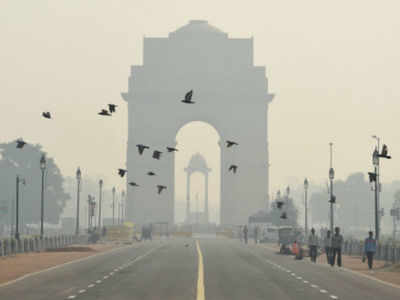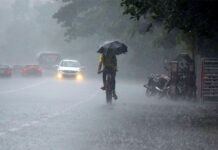Winter this year could be comparatively warmer. The India Meteorological Department (IMD) on Thursday predicted that El Nino Southern Oscillation (ENSO) neutral conditions are prevailing over equatorial Pacific Ocean and it is likely to develop in the next couple of months. And this is likely to impact the coming rabi season as also the winter season. Due to formation of El Nino over Arabian Sea and Pacific Ocean, the temperature in winter is expected to be warmer than usual winter.
Officials of IMD said El Nino refers to the cycle of warm temperature in ocean waters because of radiation. “This will slowly move towards the Arabian Sea and subsequently impact winter temperatures,” officials added.
In a statement, the IMD said El Nino Southern Oscillation (ENSO) neutral conditions are prevailing over equatorial Pacific Ocean and it is likely to develop in the next couple of months. “Currently, neutral Indian Ocean Dipole (IOD) conditions are prevailing over equatorial Indian Ocean. Neutral IOD conditions are likely to prevail during next two weeks,” the IMD said.
In contrast to the Southwest Monsoon which sees more rains in La Nina and lesser in El Nino, rainfall activity during the northeast monsoon season is higher during the El Nino and very less in La Nina.
The IMD said conditions are favourable for withdrawal of Southwest monsoon from the country around October 20. “The conditions are also favourable for onset of northeast monsoon thereafter,” it said. The northeast monsoon season makes an appearance after southwest monsoonbids adieu to the country and southwest monsoon may retreat any time in the country. Usually, Northeast Monsoon arrives during the third weekof October.
The country witnessed rain deficiency of 9 per cent this year. This is despite that IMD had predicted normal rainfall in the country. As manyas 254 districts are faced with drought like situation due to rain deficiency during southwest monsoon.
In the last few years, there have been varied rain amounts in the northeast monsoon season with 2017 witnessing 86 per cent of rain, 2016 seeing very little rains at a mere 35 per cent, 2015 recorded a whopping 132 per cent of rainfall, rains were at 88 per cent in 2014, 86 per cent in 2013, 93 per cent in 2012, 96 per cent in 2011 and a massive 154 per cent in 2010. Rainfall pattern will also undergo some changes as the rainfall that usually occurs during afternoon and late evening, would now be witnessed during night and early morning hours. However, if there is any system, we can expect rain all along the day.
The kharif planting season ended with a drop in acreage over last year’s figure. According to latest numbers from the Agriculture Ministry, kharif crop planting has covered 1,052.38 lakh hectare from June up to September 28, a 1.90 per cent drop from 1,072.79 lakh hectare a year earlier.












